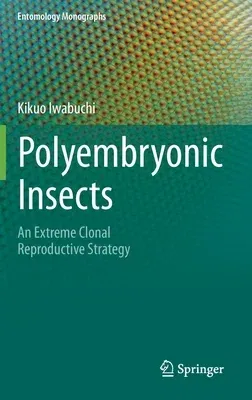Kikuo Iwabuchi
(Author)Polyembryonic Insects: An Extreme Clonal Reproductive Strategy (2019)Hardcover - 2019, 13 February 2020

Qty
1
Turbo
Ships in 2 - 3 days
In Stock
Free Delivery
Cash on Delivery
15 Days
Free Returns
Secure Checkout

Part of Series
Entomology Monographs
Print Length
199 pages
Language
English
Publisher
Springer
Date Published
13 Feb 2020
ISBN-10
9811509573
ISBN-13
9789811509575
Description
Product Details
Author:
Book Edition:
2019
Book Format:
Hardcover
Country of Origin:
NL
Date Published:
13 February 2020
Dimensions:
23.39 x
15.6 x
1.27 cm
Genre:
Ecology
ISBN-10:
9811509573
ISBN-13:
9789811509575
Language:
English
Location:
Singapore
Pages:
199
Publisher:
Series:
Weight:
476.27 gm